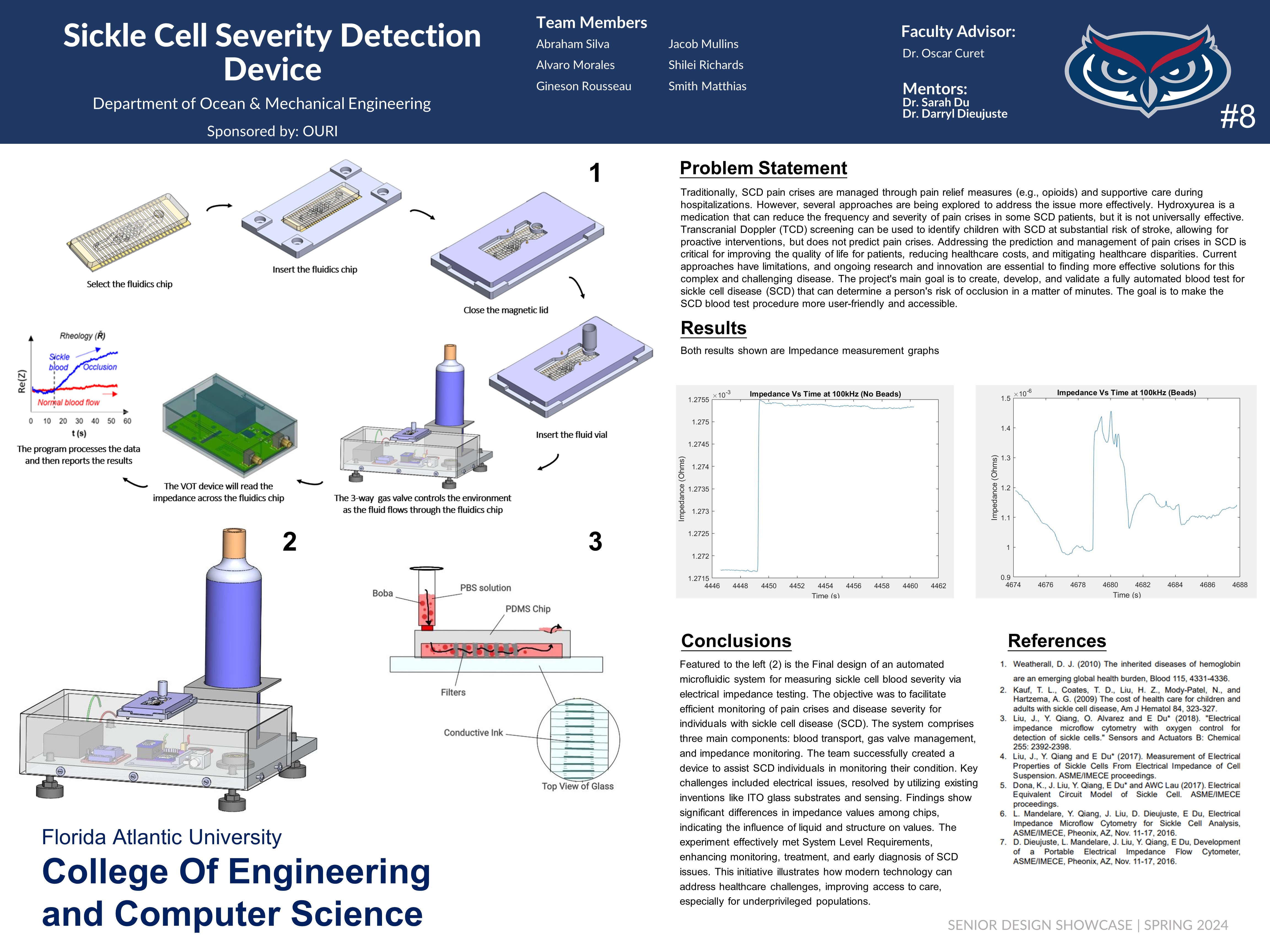Sickle Cell Severity Detection Device

Overview
Sickle Cell Disease (SCD) is a hereditary blood disorder that affects the shape of hemoglobin. Usually, red blood cells are disc-shaped and flexible. Our device uses a microfluidic PDMS chip bonded to a patterned electrode glass piece to measure the impedance of a patient's blood sample. This impedance is found through the measurement of blockage that occurs in the designed microfluidic chip. There are obstacles in the middle that will stop sickle cells specifically. This sensory data is picked up by our Arduino uno and communicates with python coding on the computer to give the user data on everything that is occurring. User interface is also important to our device as we wish to give whoever is operating the device (whether it is a doctor, nurse, or patient) an easy time accessing the data they need. For the purposes of biohazard safety and audience viewing, we have upscaled the microfluidic chip to see the entire process.
Community Benefit
With Sickle Cell Disease (SCD), the blood cell shape becomes more crescent like and stiff due to a genetic mutation. This can block blood flow to the rest of the body and cause pain crisis. This blood disorder affects 100,000 Americans and 1 out of 365 African American Births. 1 in 13 African-Americans are born with Sickle Cell Trait. How severe SCD symptoms occur depends on each individual and the oxygen partial pressure in the blood which can vary depending on the part of the body. This is where our device comes in. Given the two oxygen conditions, our device can also test the severity of the patient's SCD at any given moment, only needing a disposable chip and a few minutes. Our device attends to those who wish to monitor their Sickle Cell Disease over time and observe which behaviors/actions may they take that may increase the severity of their symptoms. This is why our device is small and portable, and simple, easy to access design.
Team Members
Sponsored By:
FAU Undergrad Symposium